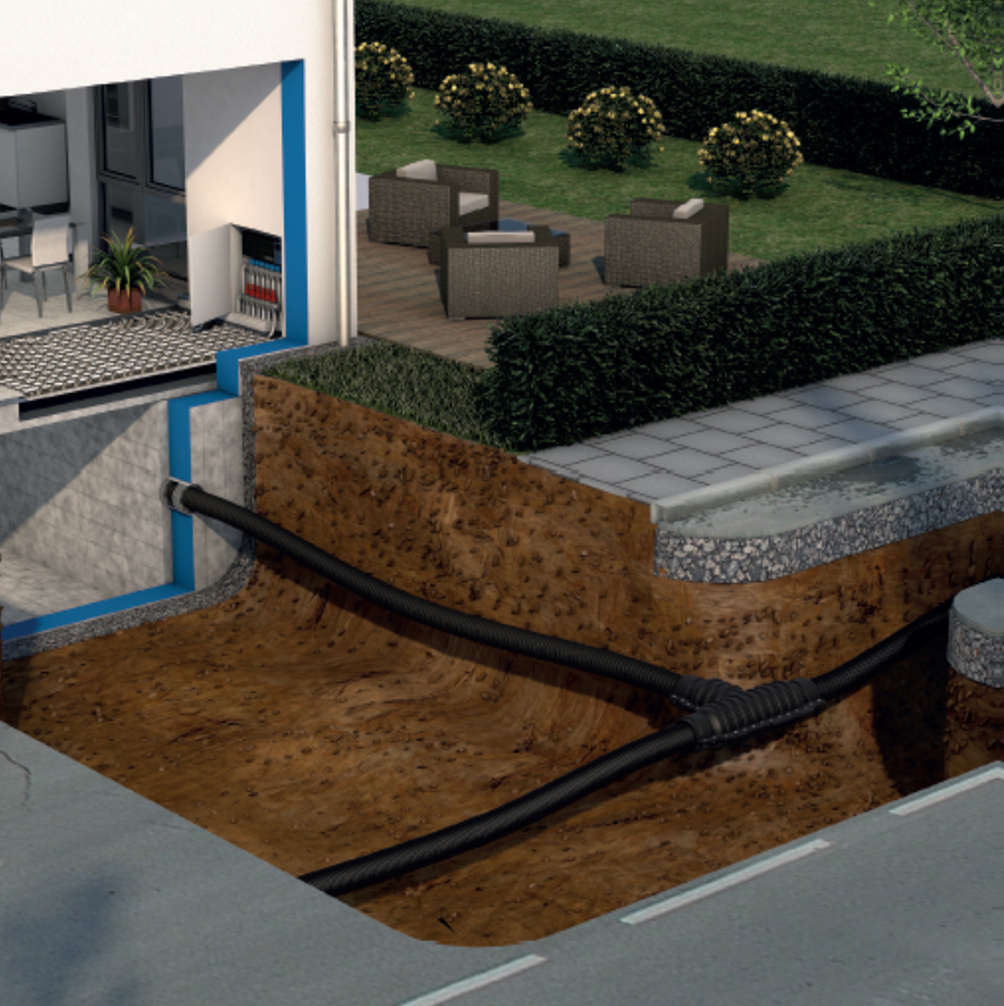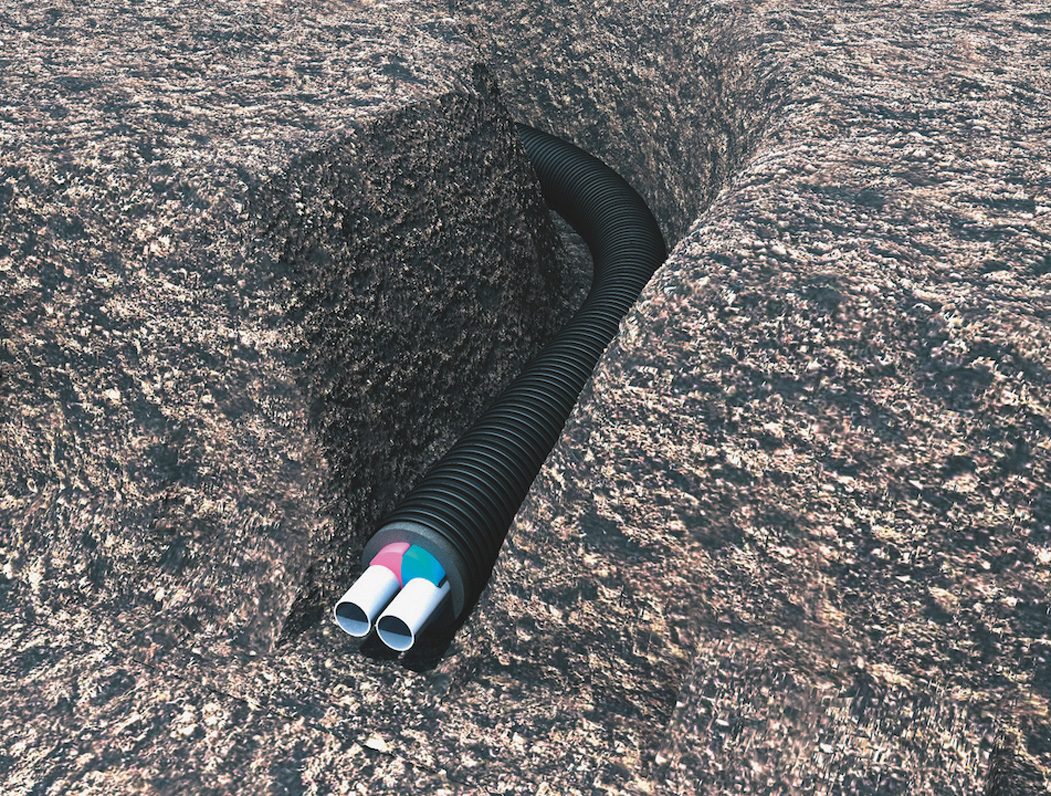Decentralised energy such as heat networks looks set to play an important role in the decarbonisation of heating. Here, Mark Dowdeswell, Senior Category Manager at Uponor, provides an overview of how these systems can help the UK get to net zero and the latest developments with regard to deployment.
The concept of heat networks, a centralised energy source providing heating and hot water for nearby buildings through a network of insulated pipes and heat interface units, is by no means new. However, heat networks, also known as district heating, have received increased attention in recent years as the UK, and the wider world, focuses on reducing greenhouse gas emissions.
Significant changes to the way we heat and power our buildings is required if the UK is to achieve its target of net zero by 2050. While there is currently more than 14,000 heat networks in the UK, providing heating and hot water to approximately 480,000 people (1), the Department for Energy Security and Net Zero (DESNZ) states that this represents only about 2% of all UK heat requirements. However, the Climate Change Committee estimates that this could be increased to at least 18% by 2050 (2).
While the emphasis has recently been on individual heat pumps as a replacement for gas boilers in homes and business premises, district heating has the potential to play a significant role in decarbonisation for several reasons. Firstly, the scale of heat generation compared with individual boilers means that heat networks are typically more energy-efficient. This reduces the use of fuel and reduces carbon emissions even where conventional fuel sources, such as natural gas, are used.
Heat networks also allow easier and more effective deployment of renewable energy. It is not usually possible to utilise wind or geothermal energy for individual properties or in dense urban areas, and solar thermal can be challenging to implement on multi-storey developments. However, the centralised nature of district heating makes these technologies more widely viable and therefore helps expand the use of low or zero carbon energy. Heat networks can also utilise sources of heat that are generally considered waste, such as by-product heat from industrial processes and power generation.

Benefits for local authorities
Local authorities are under pressure to decarbonise with the Government stating in the Heat and Buildings strategy that the public sector should lead the way. As such, a target has been set to reduce direct emissions from public sector buildings by 75% by the end of 2037 compared to 2017 levels.
The biggest challenge is often existing properties and facilities as, unlike new developments, they were not typically designed and built around low carbon heating technologies. However, with a range of building and property types, each with varying characteristics it is likely that different low carbon solutions will be suitable for different applications.
Heat networks connected to renewable energy sources are an obvious fit for larger buildings or groups of buildings, such as educational campuses or hospitals. This is because it eliminates the need for heat sources in each building and can be easily retrofitted to encompass all areas of the site.
Similarly, for residential properties, heat networks can provide a solution that is easier, quicker and more cost-effective to implement at scale compared to options such as individual air or ground source heat pumps. For example, Uponor was involved in a project for housing association Flagship Homes where a district heating system was installed in a residential area of Felixstowe in Suffolk.
Renewable heating specialist Finn Geotherm installed six centralised ground source heat pumps to provide heating and hot water to more than 100 houses, flats and bungalows. The upgrade was completed with minimal disruption to the residents, who were able to remain in their homes throughout. By replacing the expensive and inefficient electric storage heaters that had previously been used resulted in a 70% reduction in carbon emissions and energy bills.
In addition to the energy savings, heat networks can also simplify maintenance as the heat source, such as the centralised heat pump, can be inspected and serviced with no need for maintenance teams to visit individual homes or buildings.
A further benefit of heat networks is that local authorities are ideally positioned to utilise a wide range of heat sources to make the best use of local resources. For example, since 2020, waste heat from the London Underground’s Northern Line has been used to provide heating and hot water to 1,350 homes, two leisure centres and a primary school in Islington.

Support for heat network development
There has been government support for local authorities with regard to district heating since 2013 in the form of the Heat Networks Delivery Unit. The HNDU has provided guidance and funding to more than 300 schemes across England and Wales and is now on its 13th round of funding.
More recently, there has been a series of government initiatives to help drive further development of heat networks. In the Heat and Buildings Strategy, the Government outlined the £338m it was investing between 2022 and 2025 through the Heat Network Transformation Programme (HNTP). In its Powering Up Britain strategy, published in March this year, the Government confirmed financial support for further heat network development up to 2028. This includes £220m for the HNTP over 2025/6 and 2026/7. In addition, for public, private and third sector organisations that are responsible for existing heat networks, the Heat Network Efficiency Scheme (HNES) offers grants to support performance improvements.
Working with suppliers
It is also important to partner with experienced suppliers who can offer solutions designed for heat networks as well as provide guidance and technical assistance throughout the process, from the design to post-completion support. This is because the issues such as levels of heat loss in the pipework can make a significant difference to the performance of the network. For example, the Uponor Ecoflex VIP pre-insulated pipe meets the BS EN 15632 standards for district heating and has been engineered to achieve up to a 60% reduction in heat loss and lambda values as low as 0,004 W/Mk.
For local authorities, heat networks look set to become more important in the coming years as the UK drives towards net zero by 2050. The scalability of a heat network means it can provide the solution for a wide range of applications, but the potential complexity of the design means choosing the right partner organisations is essential.
To find out more about the services and support Uponor offers, as well as its range of products designed for district heating, visit www.uponor.com/en-gb










